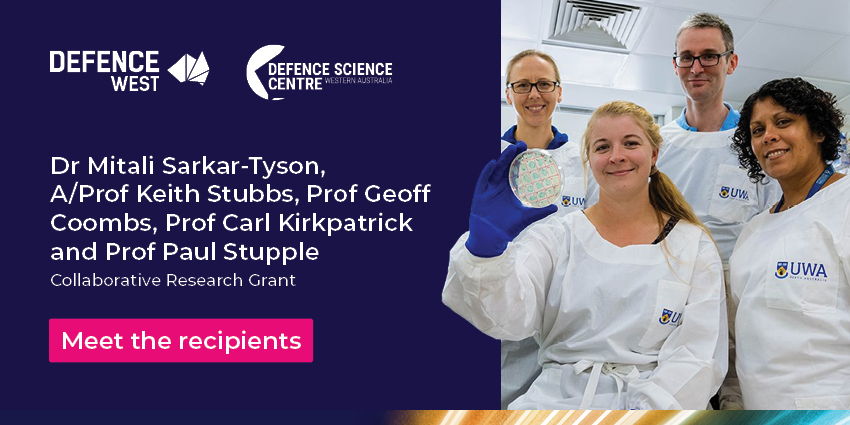
This national multidisciplinary project is developing unique solutions to the global challenge of antibiotic resistance by making antibiotic treatment more effective when co-administered.
Background
Antimicrobial resistance is one of the top global public health and development threats, with the world facing an antibiotics pipeline and access crisis. In Australia, in the face of rising levels of resistance, there is an urgent need for additional research and development measures to ensure equitable access to new and existing vaccines, diagnostics and medicines.
Bacterial pathogens exist in the natural environment, this makes them a major threat to the communities, travellers and soldiers deployed in these areas. Worryingly, these pathogens are also difficult to treat due to increasing levels of resistance to antibiotics leading to treatment failure. This is heightened in pathogens of biological warfare concern such as the highly infectious bacteria, Burkholderia pseudomallei and Coxiella burnetii, which cause infections such as melioidosis and are spread through direct contact with contaminated water or soil.
Lead by the University of Western Australia, partnering with the Defence Materials Technology Centre (DMTC), Defence Science Institute (Victoria), Murdoch University and Monash University (Victoria), this project has further developed compounds to work together with antibiotics to treat disease more effectively.
Approach
The team has developed a new strategy to treat infections which uses innovative compounds against a bacterial protein, known as the macrophage infectivity potentiator (Mip), which is present in pathogenic bacteria including multiple biowarfare agents.
The strategy is different to classic antibiotic therapy, which treats bacterial infections by killing the pathogen or interrupting the growth cycle of the pathogen to prevent it from reproducing. The compounds Mitali’s team have developed instead target a bacterial protein which is important in causing disease but does not affect growth, reducing the development of antibiotic resistance.
The advantages of these new compounds include disarming the bacteria, making the pathogen less harmful to humans, interfering with disease progression and potentially enabling the successful use of currently ineffective antibiotics to treat these diseases. This offers new therapeutic solutions to treat multiple bacterial infections.
Outcome
This work has implications across multiple sectors and can provide benefits to both defence and public health. This includes improving the activity of current antibiotics and the potential to repurpose ineffective antibiotics, increasing the number of options for treatment of deadly bacterial diseases. It has also developed capability in Western Australia for screening new medical countermeasures against bacterial biowarfare agents and expanded local chemical manufacturing allowing scale up of small molecule inhibitors.
The Collaborative Research Grant (CRG) is one of several grants operating through the Defence Science Centre.
Find more information on the CRG on the Defence Science Centre grants programs page.


